As the world increasingly recognizes the critical threats posed by climate change and environmental degradation, the need for sustainable energy solutions has never been clearer. In recent years, there has been a marked shift toward investing in renewable energy, not just for environmental reasons but also due to the financial potential that such investments hold. This blog post explores the rise of sustainable energy funds, notable market trends, key players like Greenbacker, and the promising future of green energy funding.
The Shift Toward Sustainability: A Market Overview
The transition to renewable energy is more than just a trend; it’s a paradigmatic shift in how we think about energy production, consumption, and investment. According to the International Energy Agency (IEA), global renewable energy capacity continued to see significant growth in 2022, with solar and wind leading the charge. A report by Bloomberg New Energy Finance estimates that renewable power capacity could reach 12,000 gigawatts by 2030—roughly equivalent to the current total global power capacity.
Several factors are driving this transition:
-
Government Policies: Many governments are implementing strict regulations to curb carbon emissions and promote sustainability. Tax incentives, subsidies, and grants for renewable energy projects are becoming more common.
-
Technological Advancements: Innovations in technology have led to more efficient and lower-cost renewable energy solutions. Battery storage, in particular, has dramatically improved the viability of renewable sources like wind and solar.
-
Increased Consumer Demand: There is a growing consumer demand for clean energy products and services, as individuals and businesses alike aim to reduce their carbon footprint.
- Institutional Investors: Large institutional investors are increasingly looking to diversify their portfolios with sustainable investments, leading to the creation of specialized sustainable energy funds.
The Rise of Sustainable Energy Funds
Sustainable energy funds focus specifically on investments in companies, projects, and technologies that promote renewable energy and environmental sustainability. These funds are often structured as mutual funds, exchange-traded funds (ETFs), or private equity funds that target projects in solar, wind, geothermal, and other renewable sectors.
Key Features of Sustainable Energy Funds:
-
Diversification: Investment funds often hold a diverse range of assets, spreading risk across various sectors and projects. This diversification can make renewable energy funds less risky compared to single project investments.
-
Impact Investing: Many sustainable energy funds are designed not just for financial returns but also for social and environmental impact. This aligns with the values of many millennial and Gen Z investors who prioritize sustainability.
- Focus on Long-Term Growth: Unlike traditional fossil fuel investments, which have been subject to market volatility and legislative changes, sustainable energy funds are often built around long-term growth trends, such as the rising demand for renewable energy.
Spotlight on Major Companies: Greenbacker
One of the prominent players in the sustainable energy fund space is Greenbacker Capital. Founded in 2011, Greenbacker is a renewable energy investment firm focused on acquiring and managing sustainable energy projects. Their portfolio includes a wide range of renewable assets, particularly solar and wind projects across the United States.
Why Greenbacker Stands Out:
-
Diverse Portfolio: Greenbacker has invested in various energy assets, including operational solar farms, wind turbines, and energy storage facilities. This diversification helps mitigate the risks associated with investing in a single energy source.
-
Strong Financial Performance: Greenbacker has consistently provided strong returns to its investors, leveraging government incentives and rapidly decreasing costs in renewable energy technology.
-
Commitment to Sustainability: The company is dedicated to sustainability and aims to reduce reliance on fossil fuels while promoting clean energy solutions. This commitment resonates with environmentally-conscious investors.
- Publicly Traded Options: Greenbacker’s transition to offering publicly traded shares provides retail investors more access to sustainable energy investments, democratizing the opportunity for individuals interested in the sector.
Market Trends Shaping the Future of Green Energy Funding
Several key trends are shaping the future of green energy funding, positioning it as a cornerstone of global finance:
-
Increased Capital Influx: Investment in renewable energy is expected to rise dramatically as institutional investors and high-net-worth individuals seek sustainable investment opportunities. Financial institutions are launching green bonds and sustainability-linked loans, making capital more accessible for renewable projects.
-
Electric Vehicles (EV) and Infrastructure: The growing adoption of electric vehicles is creating demand for renewable energy sources to power this transition. Investments in EV infrastructures and energy solutions linked to electric mobility present exciting opportunities for sustainable funds.
-
Corporate Sustainability Commitments: Many major corporations are pledging to achieve net-zero emissions within set time frames. This has led to a surge in corporate investments in renewable energy, creating demand for sustainable energy solutions.
-
Mergers and Acquisitions: As the market for renewable energy matures, we are likely to see an increase in mergers and acquisitions, consolidating various players in the space. These actions can lead to improved efficiencies and broadened market reach for sustainable funds.
- Decentralized Energy Systems: The shift towards decentralized energy (off-grid solutions, microgrids, etc.) is creating new investment opportunities that allow consumers and businesses to take control of their energy production and consumption.
Conclusion: The Bright Future of Renewable Energy Investment
The rise of sustainable energy funds is no longer a niche market—it is becoming the norm. Companies like Greenbacker, along with increasing consumer and institutional demand, underline the financial viability of investing in renewable energy. With market trends leaning decidedly toward sustainability, the road ahead is filled with diverse investment opportunities that promise both strong returns and significant impact.
As we move further into the 21st century, the driving force of renewable energy investments will not only reshape the financial landscape but also protect our planet for future generations. For investors looking to make a meaningful difference while achieving financial returns, sustainable energy funds present a compelling avenue to explore.


